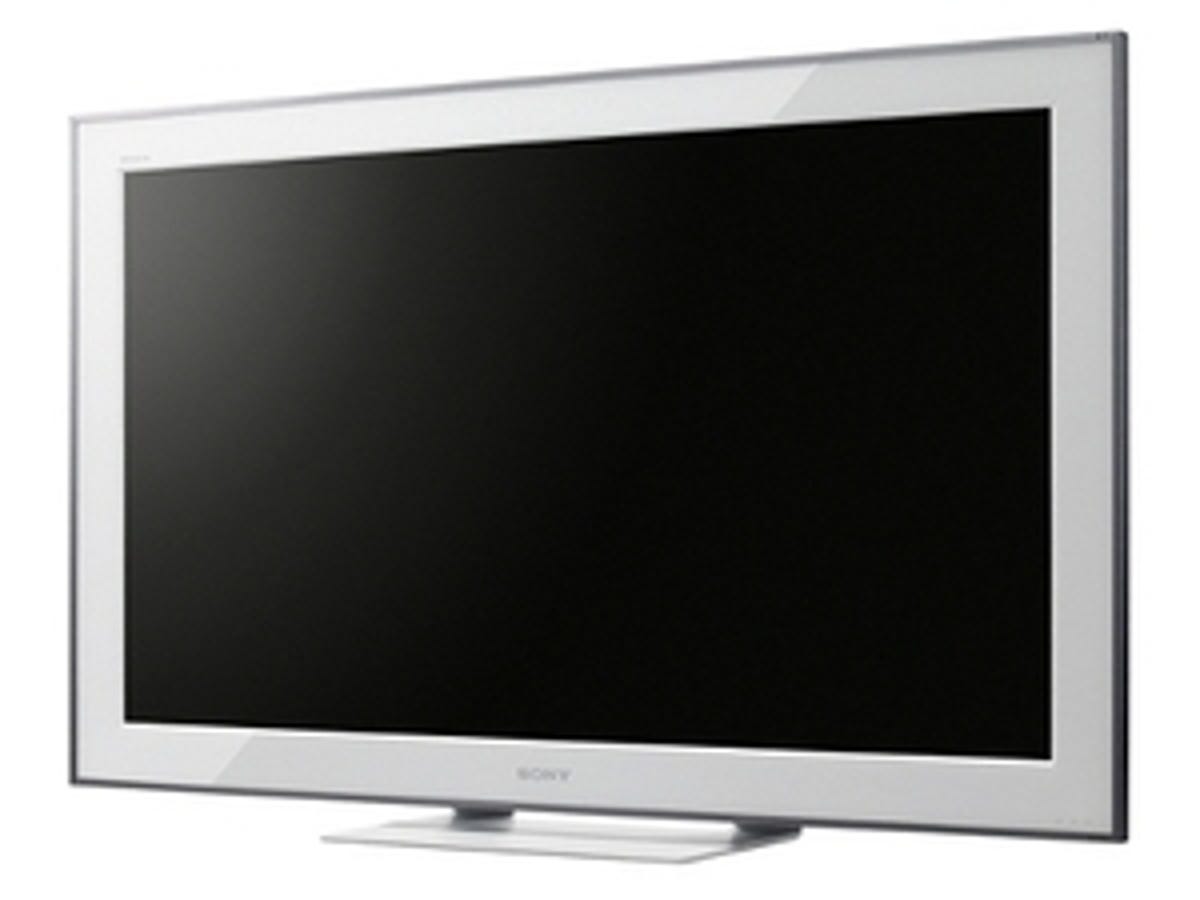 Why You Can Trust CNET
Why You Can Trust CNET Sony Bravia EX1 (KDL-52EX1) review: Sony Bravia EX1 (KDL-52EX1)
Sony seems to have let its mad scientists loose on the 52-inch, 1080p Bravia KDL-52EX1 LCD TV, judging by its bold, picture-frame design. Its appearance won't appeal to everyone, but the 1080i wireless connectivity is handy and the set's pictures aren't bad either
We assume Sony's mad-scientist division is responsible for creating the 52-inch, 1080p Bravia KDL-52EX1 LCD TV. As well as its outlandish looks, it has one of the most confusing feature sets that our poor, aching brains have ever come across, and its £2,000 price tag is just plain insane.
The Good
The Bad
The Bottom Line
Nutjob design
As with most slightly bonkers things, the KDL-52EX1 is no shrinking violet. For starters, the bezel around its already monumental screen is one of the widest we've ever seen, giving the TV truly gargantuan proportions. The bezel's unusual glossy white finish is given added emphasis by its slender black outer frame. Some folk will undoubtedly love this bold design, but we're sure that just as many people will hate it.
It's worth adding that the screen sits unusually low down on its provided desktop pedestal. This is significant because, combined with the appearance of the chassis, it gives the impression that the set is a vast photo frame. Indeed, the KDL-52EX1 sports Sony's low-power Picture Frame mode, which lets you leave photos and artwork on-screen when you're not watching anything.
Another interesting design twist is that the KDL-52EX1 comes in two parts. Sony has decided to take the tuner and connections out of the TV's body and build them into an external multimedia box that connects to the set wirelessly. This will suit anyone who wants to hang the KDL-52EX1 on a wall, as you won't have to worry about hiding reams of cables. But there's a catch -- Sony's current wireless AV system can't support 1080p signals of the sort beloved by most serious Blu-ray devotees, only supporting up to 1080i. You can get 1080p/24p onto the screen via the single HDMI port, but this doesn't sit well with the wireless concept.

Inputs on the media box include a respectable three HDMI sockets, and a USB port that's able to play quite a variety of multimedia file formats. The KDL-52EX1 also sports 100Hz processing, but oddly only uses Sony's Bravia Engine 2 video system, rather than the much-improved Bravia Engine 3 system now adorning many of Sony's other TVs.
Disappointing audio
The first thing to say about the KDL-52EX1's performance is that its sound is strangely disappointing. You'd have thought that having such a massive body would have enabled it to carry some pretty serious speakers, but audio struggles to break free of the TV's body, as well as sounding light on bass and sometimes harsh and hissy. The best that can be said is that the sound stage is quite good at bringing out subtle details in a movie mix.
Retro images
The KDL-52EX1's pictures are fairly good, though. In fact, with bright, relatively static high-definition footage, we might even go so far as to say they're very good. It's pleasing to note, too, that they're not badly affected when delivered to the TV wirelessly, although, as we mention below, pictures can look slightly soft. Overall, however, the set's images seem to belong more to Sony's 2008 range of TVs than its 2009 efforts. This is something that's hard to forgive, considering the set's high price.
The main reason for the slightly dated feel of the pictures is the KDL-52EX1's contrast performance. While it can handle light colours well, parts of the picture that should look more or less black instead tend to look rather grey.
The KDL-52EX1's pictures also don't deliver quite such extreme crispness as we'd usually expect to see on a Sony TV, especially with high-definition material. This is despite the Motionflow 100Hz system doing a fair job of keeping excessive judder and motion blur out of the picture.
It has to be said, too, that the 100Hz engine doesn't look as sophisticated as the system found in Sony TVs with Bravia Engine 3. It can throw up noticeable processing side effects, particularly if you attempt to use it beyond its lowest setting.
Two other issues we have with KDL-52EX1's pictures are that they're not particularly bright once you've calibrated them to deliver a good black-level response, and colours don't look quite as vibrant as we'd normally expect on a Sony TV.
Conclusion
There's no doubt that the Sony Bravia KDL-52EX1 makes a bold statement. But Sony is capable of delivering better picture quality, and this fact ultimately makes for an over-priced, rather than premium, TV.
Edited by Charles Kloet
